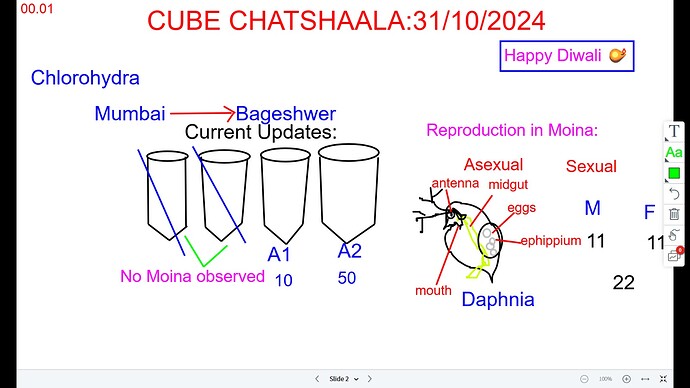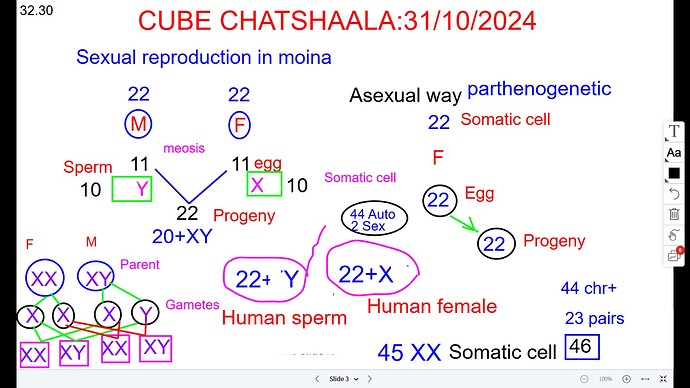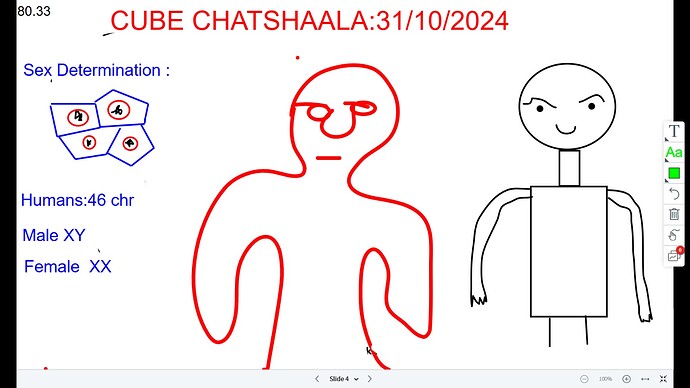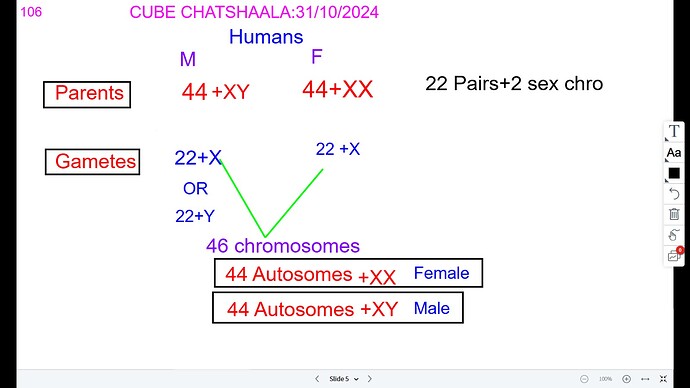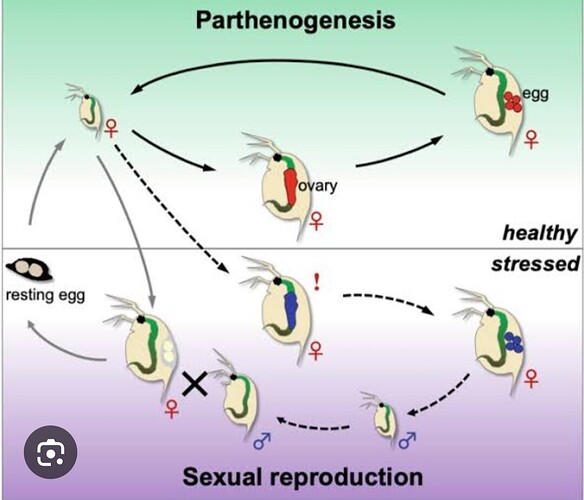According to Kiran, there is no Moina present in the sample received from Sakshi in Mumbai. The discussion focused on the possibility of asexual reproduction in Moina. We discussed the reproduction in Moina, including both sexual and asexual methods.
Questions addressed:
How is chromosome number maintained in organisms during sexual and asexual reproduction?
What are the differences in chromosome numbers among parents, gametes, and offspring?
Confusion: I thought human gametes had 22+XX or 22+XY, but through our discussion, I corrected myself to understand that human chromosomes consist of 22+X and 22+Y in male gametes, and 22+X in female gametes.
Reference:
Chromosomes number in Moina:
From a study of over 1000 mothers, the female chromosome number appears to be 2N = 22; N = 11. https://onlinelibrary.wiley.com/doi/abs/10.1002/jmor.1050480106
[31/10, 9:49 pm] Theertha: Reference shared:31/10/2024
[31/10, 9:49 pm] Theertha: Freshwater zooplankton Daphnia adopts two distinct ways of reproduction: asexual (parthenogenetic) reproduction for rapidly reproducing many offspring in favorable environment and sexual reproduction for producing resting eggs as seed bank to survive in harsh environments. https://www.sciencedirect.com/science/article/abs/pii/S0269749119361706#:~:text=Freshwater%20zooplankton%20Daphnia%20adopts%20two,to%20survive%20in%20harsh%20environments.
[31/10, 9:50 pm] Theertha: Daphnia can produce resting eggs via sexual reproduction when environmental conditions are not suitable for them, such as colder weather (Stross, 1966), shorter daytime (Alekseev and Lampert, 2001; Stross and Hill, 1965), lack of food (Alekseev and Lampert, 2001; LaMontagne and McCauley, 2001), and crowded population (Kleiven et al., 1992). Moreover, some kinds of toxic chemicals used more frequently in agriculture and other fields, such as pesticides and drugs (Buser et al., 2012), also can cause Daphnia to reproduce sexually and produce resting eggs. The resting eggs protected by a stable and dark shell called ephippium will continue developing after several periods of dormant stages, and thus survive in the adverse environments and maintain population continuity (Davison, 1969). https://www.sciencedirect.com/science/article/abs/pii/S0269749119361706#:~:text=Freshwater%20zooplankton%20Daphnia%20adopts%20two,to%20survive%20in%20harsh%20environments.
[31/10, 9:50 pm] Theertha: From a study of over 1000 mothers, the female chromosome number appears to be 2N = 22; N = 11. https://onlinelibrary.wiley.com/doi/abs/10.1002/jmor.1050480106
